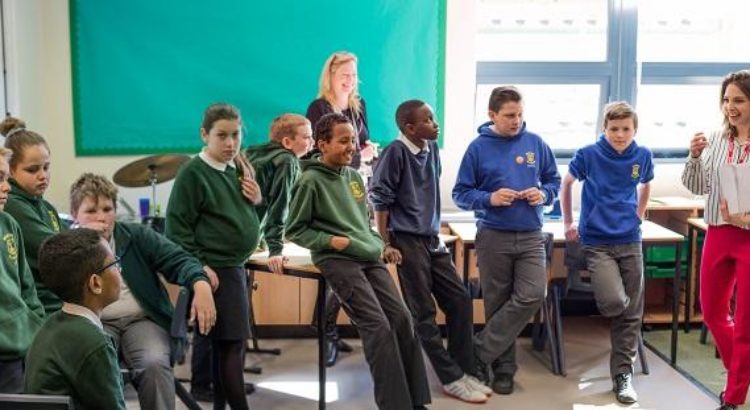By: Sasha Banks-Louie , Oracle
Employers need to fill 1.6 million jobs in the US that require backgrounds in science, technology, engineering, and math by 2021, according to a 2016 study by the US Department of Education. That demand is spurring new approaches to STEM education that are designed to appeal to more, and a greater diversity, of students.
“Science educators know we need to stop teaching facts and figures from textbooks and start showing students how to apply the fundamental concepts of scientific methods to real-world problems,” says Dr. Becky Sage, CEO of Interactive Scientific, a UK-based education technology firm.
Interactive Scientific, part of the Oracle Startup Cloud Accelerator program in Bristol, has developed scientific simulation software, called Nano Simbox, which students are using to observe how atoms and molecules interact. Researchers are also using this technology to explore new theories, product designs, and drugs.
Employing tablets, virtual reality headsets and controllers, students can visualize atoms, observe how they behave in different combinations, and manipulate them for testing.
Dominique Skinner, a chemistry student at Queen Mary University of London studying biochemistry, used Nano Simbox technology and research to combine atoms and create digital models of the molecules for a plant-based line of cosmetics.
“I wanted to put science next to veganism, and veganism next to cosmetics,” Skinner says. “Nano Simbox allowed me to see how skin would react to molecules from animal proteins and synthetic chemicals that were harsh on the skin versus plant-based molecules that benefited the skin.”
New Approach to Learning
Interactive Scientific has begun experimenting with artificial intelligence to understand how students learn, and how applying machine-learning algorithms could guide their progress.
“Whilst our machine learning work is in its infancy we have already designed the software to help students understand complex, scientific concepts in a way that’s unique to their individual learning styles and encourages them to challenge their own thinking by exploring alternative ideas,” says Sage.
Traditional teaching approaches using textbooks and standardized testing tend to be less flexible, both in the pace at which students progress and how their understanding is tracked and measured.
Nano Simbox’s simulation software runs on Oracle Infrastructure as a Service, making it possible “to scale this really complex science,” says Interactive Scientific founder Dr. David Glowacki.
“We needed a system to help us monitor, log, and report on scalability in real-time,” says Glowacki, who’s also a Royal Society research fellow at the University of Bristol and visiting scholar with Stanford University’s chemistry and mechanical engineering departments.
Creating Opportunities
Traditional methods of teaching STEM can be a deterrent to some students. Females, minorities, and students from lower-income families are underrepresented in STEM education and related professions. According to the Department of Education study, that makes it harder to narrow education and poverty gaps, meet the demands of a tech-driven economy, and maintain US leadership in scientific research and innovation.
“Our goal is to open up lifelong science learning to everybody, whether you’re in grades K-12, studying at a university, or in a non-traditional learning environment,” says Sage. “And our hope for the future workforce is that inclusivity will be valued so anyone will be able to thrive in their working environment.”
Source:
https://www.forbes.com/sites/oracle/2018/02/20/can-virtual-reality-open-stem-education-and-jobs-to-more-people/#78f87b508874






 Users Today : 38
Users Today : 38 Total Users : 35459944
Total Users : 35459944 Views Today : 44
Views Today : 44 Total views : 3418509
Total views : 3418509